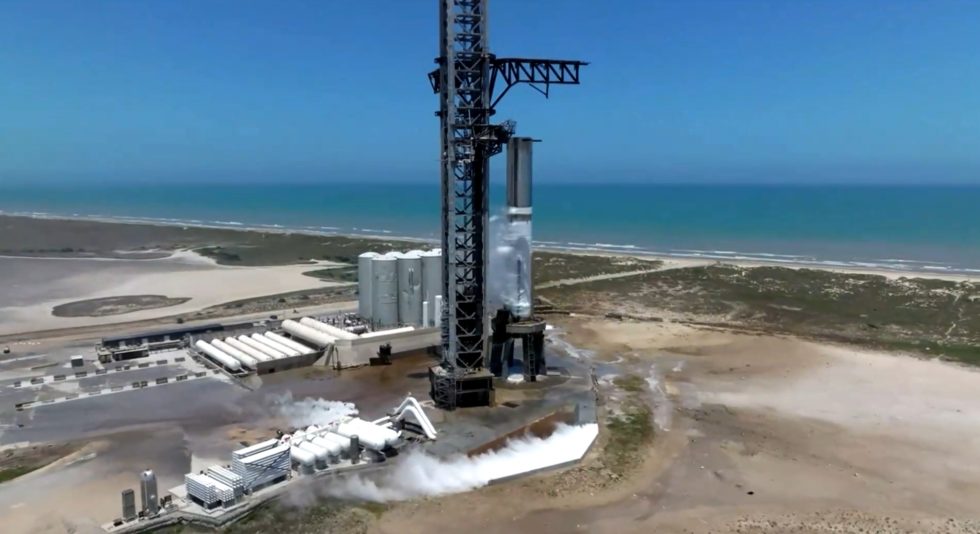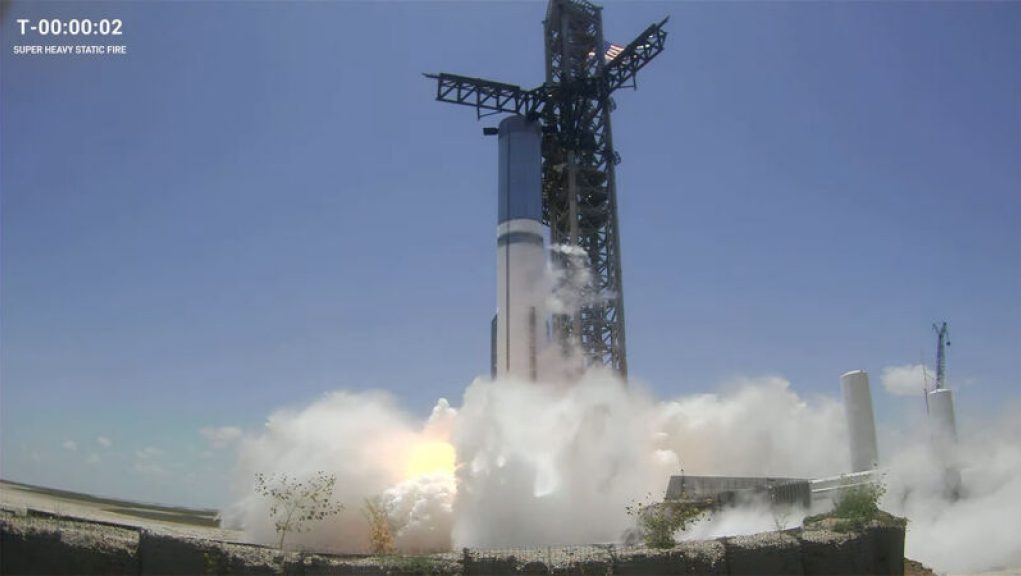SpaceX created a stunning spectacle on Sunday with a static fire test of its new Super Heavy booster in South Texas. The ignition of 33 engines was a sight to behold, and the test yielded both positive and negative results.
On the positive side, the rocket, known as Booster 9, survived the test and appeared to be in good condition afterward. Additionally, SpaceX’s revamped ground systems, including an enhanced water suppression system, performed well in protecting the rocket and launch pad.
However, the test did not run for the full duration as planned, ending after only 2.74 seconds. Furthermore, four of the rocket’s 33 main Raptor engines shut down prematurely, indicating that SpaceX is still working on improving their reliability. The rocket is currently powered by “Raptor 2” engines, but an upgraded “Raptor 3” version is in the works to address these issues.
A Step Forward
Despite the challenges, Sunday’s testing marked a step forward for SpaceX, bringing them closer to a second launch of the Starship vehicle. The full stack of the rocket includes the Super Heavy booster and Starship upper stage. It remains unclear whether SpaceX will conduct additional tests or proceed with a launch attempt this fall based on the data gathered on Sunday.
Interestingly, the fact that the test took place on a Sunday, when SpaceX can only close the road leading to the launch site and Boca Chica Beach on a few weekend days per year, suggests a sense of urgency in this launch campaign.
Advertisement
Since the failed launch attempt on April 20, SpaceX has made significant progress in repairing the damage to their launch mount and ground hardware in South Texas. One notable improvement is the installation of a large water deluge system, which was successfully tested on July 28.
This system involves firing jets of water through a perforated steel plate beneath the rocket to counteract the heat and acoustic energy generated by the 33 Raptor engines. The result on Sunday was the production of a massive amount of steam, as intended.
During the previous launch attempt, the absence of a sound suppression system caused substantial damage, including the release of concrete debris from the launch pad. This issue is currently being examined by the Federal Aviation Administration and has led to a lawsuit filed by environmental groups against the FAA to halt the issuance of a new license.
Data for Regulators
It is likely that SpaceX collected extensive data on the performance of the revamped launch site and water deluge system during Sunday’s test. This information will be crucial for the Federal Aviation Administration in the process of granting a launch license.
Another unresolved issue is the rocket’s flight termination system, which is designed to destroy the rocket if it deviates from its intended course. During its debut flight, the system was initiated less than 90 seconds in, but there was a 40-second delay before the rocket broke apart.

This delay did not pose any safety concerns as the rocket was safely offshore. However, it is an unacceptable delay for a system that should terminate flight almost immediately. SpaceX founder Elon Musk has suggested a solution involving a “longer detonation cord” to ensure rapid propellant tank unzipping. However, resolving this issue with the Federal Aviation Administration may take some time.
“The longest lead item is probably requalification of the flight termination system,” Musk stated. No further updates have been provided by either Musk or the Federal Aviation Administration since then.
On Tuesday, November 17, 2020, SpaceX successfully tested its Super Heavy Booster rocket in a major milestone in the company’s goal of launching humans to space.
The SpaceX Super Heavy Booster is the largest and most powerful rocket of its kind. It is twice as large and nearly twice as powerful as SpaceX’s Falcon Heavy rocket and will be used to launch more massive payloads, such as spacecraft and satellites, into orbit. It is also the first stage of the Starship launch system, which is designed to eventually take people to Mars.
The Super Heavy Booster test launch was conducted at SpaceX’s Boca Chica facility in South Texas. The rocket was fired up to its maximum power but only fired for a few seconds. Despite the brief duration, the test was deemed a success and was the first in a series of tests demonstrating the capabilities of the rocket.
SpaceX founder and CEO Elon Musk announced the successful outcome of the test during a press conference last Tuesday. In his comments, Musk stated that the test achieved its goals and that the rocket was running quite well. He also said that SpaceX was aiming for high-altitude test flights in the future.
The successful test is a major milestone in SpaceX’s ambitious efforts to send humans to space, as well as a big step forward for the aerospace industry as a whole. The Super Heavy Booster is just one part of a convoluted and complex process that goes into space exploration. However, this test marks a huge leap forward in this process and SpaceX will undoubtedly continue to build on the lessons learned from the successful test.




















